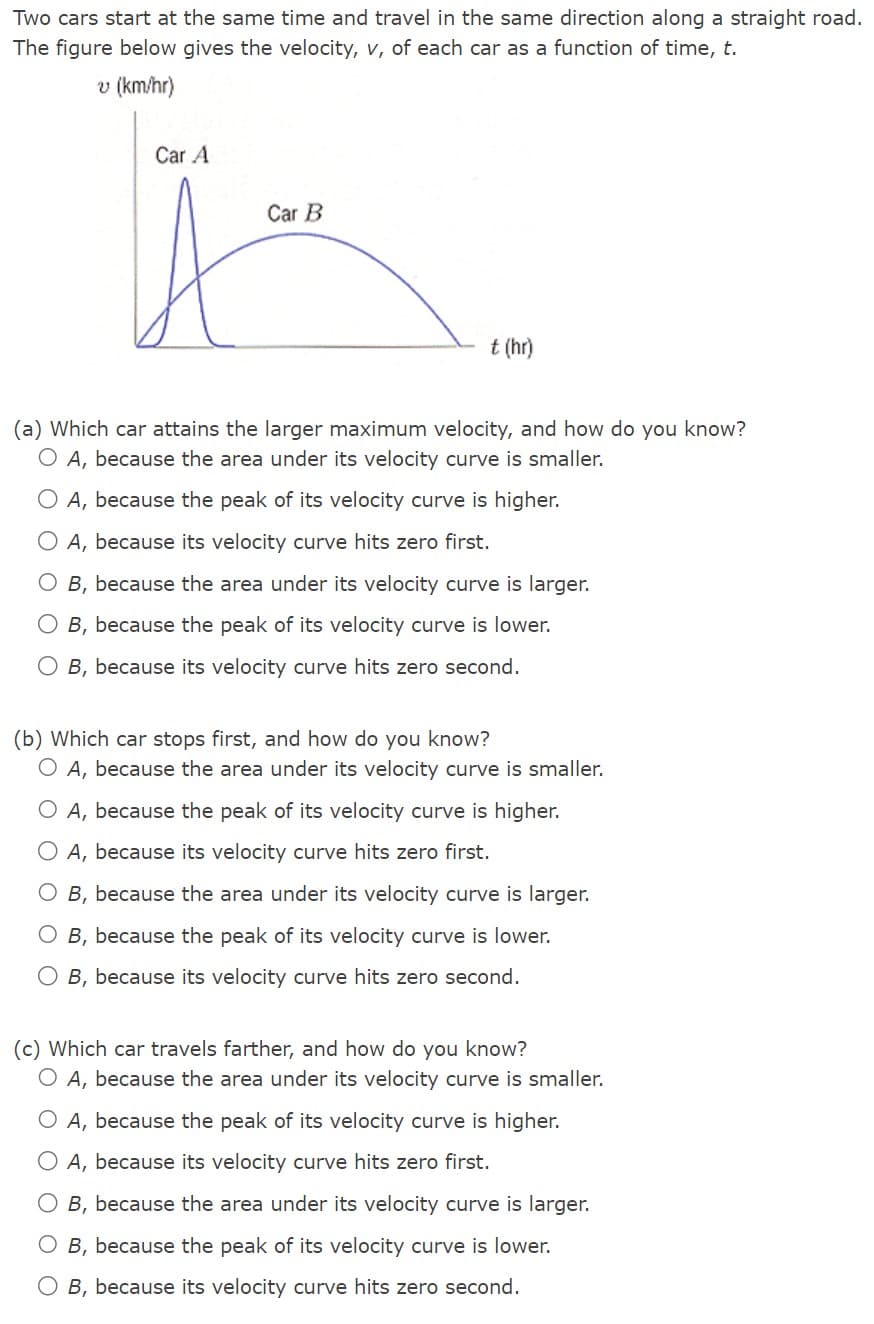Two cars start at the same time and travel in the same direction along a straight road. The figure below gives the velocity, v, of each car as a function of time, t. v (km/hr) Car A Car B t (hr) (a) Which car attains the larger maximum velocity, and how do you know? O A, because the area under its velocity curve is smaller. O A, because the peak of its velocity curve is higher. A, because its velocity curve hits zero first. B, because the area under its velocity curve is larger. B, because the peak of its velocity curve is lower. OB, because its velocity curve hits zero second. (b) Which car stops first, and how do you know? O A, because the area under its velocity curve is smaller. O A, because the peak of its velocity curve is higher. O A, because its velocity curve hits zero first. O B, because the area under its velocity curve is larger. O B, because the peak of its velocity curve is lower. O B, because its velocity curve hits zero second. (c) Which car travels farther, and how do you know? O A, because the area under its velocity curve is smaller. O A, because the peak of its velocity curve is higher. A, because its velocity curve hits zero first. O B, because the area under its velocity curve is larger. O B, because the peak of its velocity curve is lower. OB, because its velocity curve hits zero second.
Displacement, Velocity and Acceleration
In classical mechanics, kinematics deals with the motion of a particle. It deals only with the position, velocity, acceleration, and displacement of a particle. It has no concern about the source of motion.
Linear Displacement
The term "displacement" refers to when something shifts away from its original "location," and "linear" refers to a straight line. As a result, “Linear Displacement” can be described as the movement of an object in a straight line along a single axis, for example, from side to side or up and down. Non-contact sensors such as LVDTs and other linear location sensors can calculate linear displacement. Non-contact sensors such as LVDTs and other linear location sensors can calculate linear displacement. Linear displacement is usually measured in millimeters or inches and may be positive or negative.

Trending now
This is a popular solution!
Step by step
Solved in 3 steps








